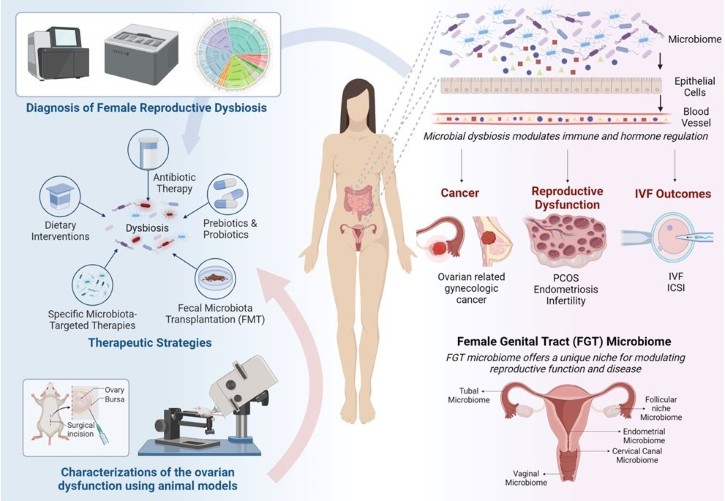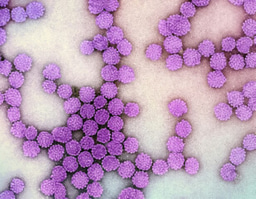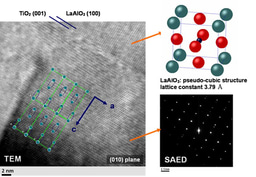World Microbiome Day - 27th June 2025🦠
Published in Microbiology

World Microbiome Day observed annually on the 27th June, aims to celebrate and raise awareness about the fascinating world of microbiomes. Microbiomes are communities of microorganisms, including bacteria, fungi, viruses, and other tiny life forms, that live in and around us. They play crucial roles in maintaining the health of humans, animals, plants, and the environment. World Microbiome Day is supported by the organisations Microbiome support, Eufic and Microbiome Ireland.
In light of this years theme, we would like to share articles, collections, blogs and content selected by our publishers that supports this objective, aligning with our commitment to support and amplify the Sustainable Development Goals (SDGs), specifically SDG 3: "Ensure healthy lives and promote well-being for all at all ages", and the related key targets.
Collections

A recently opened collection in Environmental Microbiome focuses on the adaption of microbial communities to climate change. Microorganisms are foundational to Earth's ecosystems and are fundamental to regulating the planets natural cycles such as biogeochemical cycles, animal and plant health, even climate processes. As climate change accelerates, through environmental events such as warming, altered precipitation, ocean acidification, and land-use changes, microbial communities are being pushed to rapidly adapt to this new world. This collection aims to enhance our understanding of the intricate relationships between microbial communities and climate change, providing invaluable insights for conservation and management of ecosystems under unprecedented environmental challenges.
A collection for Dairy Science and Management is welcoming submissions to their collection focused on Microbial Sensitivity Testing in Dairy: Staphylococcus aureus and Antibiotic Resistance. In the world of dairy farming, keeping milk safe and high-quality starts at the microscopic level. One of the key tools in this effort is microbial sensitivity testing—a method used to figure out which antibiotics actually work against the bacteria found in milk and dairy environments. Among the usual suspects, Staphylococcus aureus stands out. This bacterium is a common cause of bovine mastitis, a painful udder infection that not only affects animal welfare but also takes a serious toll on milk production and quality. Researchers are invited to contribute to this collection, providing insight and findings to address the challenges posed by antibiotic resistance in the dairy sector.
Aquaculture Science and Management is currently accepting submissions to their collection on the Impact of Aeromonas hydrophila on Aquaculture: Inflammation, Intestinal Changes and Antioxidant Responses. Aeromonas hydrophila is a significant pathogen in aquaculture, known for causing motile Aeromonas septicemia (MAS), which leads to substantial economic losses. Its impact on fish health is multifaceted, particularly affecting inflammation, intestinal integrity, and antioxidant responses. Researchers are invited to contribute to this collection on the Impact of Aeromonas hydrophila on Aquaculture: Inflammation, Intestinal Changes, and Antioxidant Responses.
Finally, a collection in Scientific Reports has recently opened, focused on Microbiome-based therapeutics. Microbiome-based therapy utilizes microbial communities for medical applications. While existing research has demonstrated its efficacy, many aspects of this field remain underexplored, limiting its full potential in precision medicine. Emerging strategies harness microbial ecosystems for targeted interventions, offering new possibilities for disease prevention and treatment. This Collection invites original research on the development, mechanisms, and application of microbiome-based therapies, including engineered microbial interventions, live biotherapeutics, pro-, pre-, and synbiotics.

Research Highlights
Microbiome's Effect on Human Health
The importance of the gut microbiome and its correlating health effects are showcased in the article "Causal relationship between gut microbiota and dental caries: a two-sample mendelian randomization study" from BDJ Open and the article "Metagenomic analysis revealing links between age, gut microbiota and bone loss in Chinese adults" from npj Metabolic Health and Disease. These articles outline the relationship between the gut microbiota and a variety of human diseases showcasing the effects different human microbiota have on each other and their impact on the general health of an individual. Both articles found that gut microbiota had a systemic influence on distant physiological systems such as bone and oral health, through shared mechanisms.
Therapeutic Uses of the Microbiota
Due to the likely systemic influence of human microbiotas, new investigations are being conducted into the therapeutic effects of microbiota regulation, rejuvenation and recovery. The study "A preliminary investigation into the impact of military lifestyle on the gut microbiome" and "Treating IBS with an Intestinal Microbiota Product for Health - TrIuMPH", both published by ISRCTN Registry, focus on studies to analyse the effects of regulating the gut microbiota in managing various physical and mental health effects. With the hope that, the studies will be able to highlight potential future therapies for the use of gut microbiota in treating irritable bowel syndrome and allowing individuals to be more resilient to stress.
Furthering on from this, a study published in Microbiome "A consortium of seven commensal bacteria promotes gut microbiota recovery and strengthens ecological barrier against vancomycin-resistant enterococci" aimed to to identify commensal bacteria that interfered with vancomycin-resistant enterococci (VRE) gut colonisation or act as an ecological barrier. The study identified seven-strain bacterial consortium capable of restoring gut microbiota balance, reducing colonisation by VRE in mice following antibiotic-induced dysbiosis. When this mix of seven-strain bacterial consortium was administered it was found that the enhanced microbial diversity increased beneficial metabolites like short-chain fatty acids, and significantly lowered VRE levels.
Additionally, the article "Life-long microbiome rejuvenation improves intestinal barrier function and inflammaging in mice" also published in Microbiome, found that lifelong rejuvenation of the gut microbiome in mice—through transplanting youthful gut bacteria—significantly improved intestinal barrier function and reduced age-related inflammation. The treated mice showed stronger gut lining, lower levels of inflammatory markers, and a microbial profile more similar to that of younger animals, suggesting that maintaining a youthful microbiome could be a promising strategy for promoting healthy aging.

Microbiota Biotechnology
Finally, another study also published in Microbiome "Genomic insights into novel extremotolerant bacteria isolated from the NASA Phoenix mission spacecraft assembly cleanrooms" focused on studying NASA’s Phoenix mission cleanrooms discovered 26 novel bacterial species capable of surviving extreme conditions like radiation and chemical exposure. By sequencing 215 genomes, they found these microbes possessed genes for biofilm formation, DNA repair, and resistance traits, suggesting remarkable resilience. Some also carried biosynthetic pathways for useful compounds like ε-poly-L-lysine and zeaxanthin, hinting at potential biotechnological applications. The study highlights both the persistence of microbial life in sterile environments and the importance of stringent planetary protection measures.
Research Communities Blogs
In support of this year's campaign, our authors, researchers and editors have also shared their own perspectives on microbiomes health effects, therapeutic and biotechnological uses in a series of blogs now available on Research Communities.
In a blog from our Springer Nature Staff, Srimathy Sriskantharajah, "Hidden in the blood – can blood microbiomes flag potential disease outbreaks?" she highlights the way the blood microbiome from wild animal populations can be used to flag potential infections and future disease outbreaks. This topic is further explored in the article "The Bacterial and pathogenic landscape of African buffalo (Syncerus caffer) whole blood and serum from Kenya".
Another Behind the Paper blog written by David A Pearce, "Crucial stepping stones in freshwater microbiology" he showcases the combination of a variety of long-term microbiome studies with high data volumes to generate new insights into ecosystem function, drawing attention to the benefits and current limitations within the field.
Finally, a blog showcasing the top 100 articles from across the field of Microbiology published in Scientific Reports, written by Sagar Yadav. Showcases research highlights from across the field, with the top 4 articles centred around the study of the human microbiome further illustrating the importance of this ever expanding field.
Conclusion
To find out more about World Microbiome Day and join the campaign, please visit the official World Microbiome Day page to find out how you can increase awareness, become an advocate, and read and share experiences from the global community.




Please sign in or register for FREE
If you are a registered user on Research Communities by Springer Nature, please sign in